Introduction In the world of internal combustion engines, turbochargers have become a popular method of increasing power and efficiency. This gas compressor, often referred to simply as a turbo, is a form of forced induction that forces air into the engine, resulting in more power for a given displacement. In this blog, we will explore the inner workings of turbochargers and their impact on engine performance. The Components of a Turbocharger At its most basic level, a turbocharger consists of three major components: the turbine, the compressor, and the bearing system that supports the turbine shaft connecting the turbine and compressor wheels. The turbine is located on the hot side of the turbocharger and is bolted onto the engine's exhaust manifold. As the engine runs, the exhaust gases pass through the turbine, spinning a fan called the turbine wheel. This spinning motion converts heat and pressure into rotational force, which in turn spins the compressor whee...
For energy sources, one question comes in our mind which is that, why is renewable energy important? So let’s see about energy resources.
The aim of this blog is to research the complete range of renewable energy supplies available for contemporary economies.
Such renewable energy sources are recognized as vital inputs for sustainability then encouraging their growth is critical. Subjects will includes the power from wind, water, biomass, sunshine and other such continuing sources, including wastes.
Although the size of local application ranges from tens to several many watts, and therefore the totality may be a global resource, four questions are asked for practical application:
1. what proportion energy is out there
within the immediate environment – what's the resource?
2. For what purposes can this energy be
used – what's the end-use?
3. what's the value of the energy – is it
cost-effective?
The first two are technical questions
considered within the central chapters by the sort of renewable technology.
The third question, considered with other institutional factors within the last chapter, may dominate for consumers and typically becomes the main criterion for commercial installations.
However, cost-effectiveness depends significantly on:
a.
Appreciating the distinctive scientific principles of renewable energy.
b. Making each stage of the energy supply process efficient in terms of both
minimizing losses and maximizing economic, social and environmental benefits.
c. Like-for-like comparisons, including externalities, with fuel and atomic power
.
When these conditions are met, it's possible to calculate the prices and benefits of a specific scheme and compare these with alternatives for an economic and environmental assessment.
Failure to know the distinctive scientific principles for harnessing renewable energy will almost certainly cause poor engineering and uneconomic operation.
Frequently there'll be a marked contrast between the methods developed for renewable supplies and people used for the nonrenewable fuel and nuclear supplies.
1. Renewable energy definition is that, ‘Energy obtained from natural and protracted flows of energy occurring within the immediate environment’. For renewable resources examples are a clear solar (sunshine) energy, where ‘repetitive’ refers to the 24-hour major period.
Note that the energy is already passing through the environment as a current or flow, regardless of there being a tool to intercept and harness this power. Such energy can also be called Green Energy or Sustainable Energy.
2. Non-renewable energy definition is that, ‘Energy obtained from static stores of energy that remain underground unless released by human interaction’. Examples of non renewable resources are nuclear fuels and fossil fuels of coal, oil and gas.
Note that the energy is initially an isolated energy potential, and external action is required to initiate the availability of energy for practical purposes. To avoid using the ungainly word ‘non-renewable’, such energy sources or supplies are called finite supplies or Brown Energy sources.
Renewable resources
There are five ultimate primary energy resources
of useful energy:
1 The Sun.
2 The motion and gravitational potential
of the Sun, Moon and Earth.
3. Heat from cooling, chemical reactions
and decay within the Earth.
4. Human-induced nuclear reactions.
5. Chemical reactions from mineral
sources.
Renewable energy derives continuously from sources 1, 2 and three (aquifers). Finite energy derives from sources 1 (fossil fuels), 3 (hot rocks), 4 and 5. The sources of most significance for global energy supplies are 1 and 4. The fifth category is comparatively minor, but useful for primary batteries, e.g. dry cells.
Types of Renewable Energy Resources
1. Solar energy from radiation
2. Hydro Power
3. Power from the wind
4. Biomass and Bio-fuels
5. Wave Power
6. Tidal Power
7. Ocean Thermal Energy Conversion (OTEC)
8. Geothermal Energy
1.
Solar power
The main aim of this blog is to know the radiation likely to be available as input to a solar device or crop at a selected location, orientation and time.
A secondary aspect is to elucidate the physical fundamentals related to the atmospheric phenomenon and global climate change; that’s the environmental impact on renewable energy and therefore the avoidance of which favors renewable energy. First, we discuss what proportion radiation is out there outside the Earth’s atmosphere.
Nuclear fusion reactions within the active core of the Sun produce inner temperatures of about 107 K and an inner radiation flux of uneven spectral distribution. This internal radiation is absorbed within the outer passive layers which are heated to about 5800 K then become a source of radiation with a comparatively continuous spectral distribution.
The flux (W/m2) from the Sun at the world’s distance varies through the year by ±4% due to the marginally non-circular path of the Earth round the Sun.
The radiance also varies by perhaps ±0_3 per cent per annum thanks to sunspots; over the lifetime of the world, there has been probably a natural slow decline of considerably less annual significance. Radiation incident on the atmosphere from the direction of the Sun is that the solar extraterrestrial beam radiation.
Beneath the atmosphere, at the Earth’s surface, the radiations are going to be observable from the direction of the Sun’s disc within the direct beam, and also from other directions as diffuse radiation.
Renewable energy for homes and buildings
An obvious use of solar power is for heating air and water. Dwellings in cold climates need heated air for comfort, and altogether countries predicament is employed for laundry and other domestic purposes.
For example, about 30% of the UK’s energy consumption is useful for warmth in buildings and of Australia’s energy consumption, about 20% is employed for heating fluids to ‘low’ temperatures _<100 _C.
Because of this, the manufacture of solar water heaters has become a longtime industry in several countries, especially Australia, Greece, Israel, USA, Japan and China.
The great majority of solar water heaters are for domestic properties, despite large volumes of predicament getting used for process heat in industry. For solar power systems, if the isolation is absorbed and utilized without significant mechanical pumping and blowing, the system is claimed to be passive.
If the solar heat is collected during a fluid, usually water or air, which is then moved by pumps or fans to be used, the system is claimed to move . This term concentrates on active solar water heaters, since they're common worldwide, they permit practical experiments in teaching and their analysis can provide a step-by-step appreciation of fundamentals for both active and passive applications.
The general principles and analysis that apply to the solar water heaters and apply also to many other systems which uses active and passive mechanisms to take in the Sun’s energy as heat, e.g. air heaters, crop driers, solar ‘power towers’, solar stills for distilling water and solar buildings. Solar heating systems have many other applications than the heating of water.
Solar air heaters are similar to the solar water heaters, in that the fluid is warmed by contact with a radiation absorbing surface. Solar heat also can be wont to heat air for drying crops. Much of the present world grain harvest is lost to fungal attack, which could be prevented by proper drying.
Crop drying requires the transfer not only of heat but also of water vapour. Heat engines convert heat into work (which may in turn be converted to electricity), and can be powered by solar radiation.
The design and construction of energy-efficient, solar-friendly buildings that has become a crucial aspect of recent architecture (yet sadly some very energy-inefficient buildings are still constructed!).
2. Hydro Power
The term hydro-power is typically restricted to the generation of shaft power from falling water. Later that power is used for direct mechanical purposes or, more frequently, for generating the electricity. Hydro-power is far and away the foremost established and widely used natural resource for electricity generation and commercial investment.
The early generation of electricity from about 1880 often derived from the hydro turbines, and therefore the capacity of total worldwide installations has grown at about 5% per annum since now. Hydro-power now accounts for about 20% of the world’s electricity generation. Output depends on rainfall and the terrain.
In about one-third of the planet countries, hydro-power produces quite half the entire electricity. In general the best sites are developed first on a national scale, so the rate of exploitation of total generating capacity tends to diminish with time.
Hydro installations and plants are long-lasting with regular routine maintenance, e.g. turbines for about fifty years and longer with minor refurbishment, dams and waterways for perhaps running better for about hundred years.
Long turbine life is thanks to the continual, steady operation without heat or other stress. Consequently, established plant often produces the electricity at the low cost (<4 Eurocent/kWh) with consequent economic benefit.
Hydro turbines have a rapid response for power generation then the facility could also be wont to supply both base load and peak demand requirements on a grid supply.
Power generation efficiencies could also be as high as 90%. Hydro-power, like all renewable energy sources, mitigates emissions of the greenhouse gas CO2 by displacing fossil fuel that would otherwise have been used.
However, in some dam projects, in an attempt to save lots of construction time and price, rotting vegetation (mostly trees) are left in site as dam fills up, which ends up in significant emissions of methane, another greenhouse gas.
Types of turbines:
Turbines are of two types:

1. Reaction turbines, where the turbine is totally embedded in the fluid and powered from the pressure drop across the device. Examples of reaction turbines are Francis turbine and Kaplan turbine.
2. Impulse turbines, where the flow hits the turbine as a jet in an open environment, with the power deriving from the kinetic energy of the flow. Example of Impulse turbine is Pelton wheel turbine.

The main disadvantages of hydro-power are associated with effects other than the generating equipment, particularly for large systems.
These include possible adverse environmental impact, effect on fish, silting of dams, corrosion of turbines in certain water conditions, social impact of displacement of people from the reservoir site, loss of potentially productive land which is often balanced by the benefits of irrigation on other land and relatively large capital costs compared with those of fossil power stations.
For instance, there has been extensive international debate on the benefits and disadvantages of the Aswan Dam for Egypt and the Three Gorges project for China.
3. Power from the Wind
The extraction of power from the wind with modern turbines and energy conversion systems is a longtime industry. Machines are manufactured with a capacity from tens of watts to many megawatts, and diameters of about 1 m to quite 100 m.
Traditional mechanical-only machines are further developed for water pumping, but the overriding commerce today is for electricity generation.
Such ‘wind turbine generators’ became accepted as ‘mainstream generation’ for utility grid networks in many countries with wind generation potential, e.g. in Europe, the USA and parts of India and China; other countries are steadily increasing their wind generation capacity.
Smaller turbine generators are common for isolated and autonomous power production. When wind turbines installed in windy locations and given some credit for not polluting, power production is competitive with the most cost effective sorts of other generation.
Turbines draw power from the intercepted wind, and it's going to be advantageous to funnel or concentrate wind into the turbine from outside the rotor section. Various systems are developed or suggested for horizontal axis propeller turbines,
1. Blade tips which are available in various blade designs and adaptations are ready to draw air into the rotor section, and hence harness power from a cross-section greater than the rotor area.
2. Concentrating structures Funnel shapes and deflectors fixed statically round the turbine draw the wind into the rotor. Concentrators aren't yet generally used for commercial machines.
Note also that only about half the facility within the wind is extracted because the air has got to have K.E. to go away the turbine region. a number of the doubtless best locations for wind-power are in areas of natural beauty, like coastlines, status and mountain passes.
Proposals to use such locations usually attract opposition with arguments of loss of visual amenity, irritating acoustic noise and bird strikes. Similar objections are raised to wind farms on farmland.
Manufacturers of recent wind turbines responded by having architects influence the form of towers and nacelles, by making the machines (especially the gear boxes) much quieter and by employing ecologists to advise on sites with least adverse and most advantageous impact on animals and plants.
4. Biomass and Biofuels
What is biomass?
Biomass definition
is that, the material of plants and animals, including their wastes and
residues, are named as biomass.
It is organic, carbon-based, material that reacts with oxygen in combustion and natural metabolic processes to release heat from the material. Such heat, especially if at temperatures >400 _C, could also be wont to generate work and electricity called biomass energy.
The initial material could also be transformed by chemical and biological processes to supply biofuels, i.e. biomass processed into a more convenient form, particularly liquid fuels for the transport. Examples of biofuel are includes the methane gas, liquid ethanol, methyl esters, oils and solid charcoal. The term bio-energy is sometimes used to cover biomass and biofuels together.
Biomass provides about 13% of mankind’s energy consumption, including much for domestic use in developing countries but also significant amounts in mature economies; this percentage is comparable to that of fossil gas. The domestic use of biofuel as wood, dung and plant residues for cooking is of prime importance for about 50% of the world’s population.
The industrial use of biomass energy is currently comparatively small for many countries, except during a few sugarcane-producing countries where crop residues (bagasse) burnt for process heat could also be as much as 40% of the national commercial supply.
In some industrialized countries, the increasing use of biomass and wastes for warmth and electricity generation is becoming significant, e.g. USA (about 2% of all electricity at 11GWe capacity); Germany (at 0_5GWe capacity) and in several countries for co-firing with the coal. If biomass is to be considered renewable, growth must a minimum of keep step with use.
It is disastrous for local ecology and global climate control that firewood consumption and forest clearing is significantly outpacing tree growth in ever increasing areas of the planet. The carbon in biomass is obtained from CO2 in the atmosphere via photosynthesis, and not from fossil sources.
When biomass is getting burnt or digested, the emitted CO2 is recycled into the atmosphere, so not adding to atmospheric CO2 concentration over the lifetime of the biomass growth. Energy from biomass is therefore ‘carbon neutral’. This contrasts with the utilization of fossil fuels, from which extra CO2 is added to the atmosphere.
The use of biomass in place of fossil fuels leaves the fossil fuel underground and harmless; the use of biomass ‘abates’ the extra CO2 otherwise emitted. Thus use of renewable biofuels, on a large scale, is an important component of most medium- to long-term policies for reducing greenhouse gas emissions.
It is organic, carbon-based, material that reacts with oxygen in combustion and natural metabolic processes to release heat from the material. Such heat, especially if at temperatures >400 _C, could also be wont to generate work and electricity called biomass energy.
The initial material could also be transformed by chemical and biological processes to supply biofuels, i.e. biomass processed into a more convenient form, particularly liquid fuels for the transport. Examples of biofuel are includes the methane gas, liquid ethanol, methyl esters, oils and solid charcoal. The term bio-energy is sometimes used to cover biomass and biofuels together.
Biomass provides about 13% of mankind’s energy consumption, including much for domestic use in developing countries but also significant amounts in mature economies; this percentage is comparable to that of fossil gas. The domestic use of biofuel as wood, dung and plant residues for cooking is of prime importance for about 50% of the world’s population.
The industrial use of biomass energy is currently comparatively small for many countries, except during a few sugarcane-producing countries where crop residues (bagasse) burnt for process heat could also be as much as 40% of the national commercial supply.
In some industrialized countries, the increasing use of biomass and wastes for warmth and electricity generation is becoming significant, e.g. USA (about 2% of all electricity at 11GWe capacity); Germany (at 0_5GWe capacity) and in several countries for co-firing with the coal. If biomass is to be considered renewable, growth must a minimum of keep step with use.
It is disastrous for local ecology and global climate control that firewood consumption and forest clearing is significantly outpacing tree growth in ever increasing areas of the planet. The carbon in biomass is obtained from CO2 in the atmosphere via photosynthesis, and not from fossil sources.
When biomass is getting burnt or digested, the emitted CO2 is recycled into the atmosphere, so not adding to atmospheric CO2 concentration over the lifetime of the biomass growth. Energy from biomass is therefore ‘carbon neutral’. This contrasts with the utilization of fossil fuels, from which extra CO2 is added to the atmosphere.
The use of biomass in place of fossil fuels leaves the fossil fuel underground and harmless; the use of biomass ‘abates’ the extra CO2 otherwise emitted. Thus use of renewable biofuels, on a large scale, is an important component of most medium- to long-term policies for reducing greenhouse gas emissions.
Vegetable oils are extracted from biomass on a considerable scale to be used in soap-making, other chemical processes and, in additional refined form, for cooking.
Concentrated vegetable oils may be used directly as fuel in diesel engines, but difficulties arise from the high viscosity and from the combustion deposits, as compared with conventional (fossil) petroleum-based diesel oil, especially at low ambient temperature (≤5_C).
Both difficulties are overcome by reacting the extracted oil with ethanol or methanol to make the equivalent ester. Such esters, called biodiesel, have technical characteristics as fuels that are better suited to diesel-engines than petroleum based diesel oil.
5. Wave Power
Very
large energy fluxes can occur in trouble sea waves. The power in the wave is
proportional to the square of the amplitude and to the period of the motion.
Therefore, the long period of _̴10 sec and large amplitude of _̴2 meter waves
have considerable interest for the power generation, with energy fluxes
commonly averaging between 50 and 70kWm−1 having width of oncoming wave.
The
possibility of generating electric power from these trouble waves has been
recognised for several years, and there are countless ideas for machines to
extract the facility. For example, a wave power grid was utilized in California
in 1909 for harbour lighting.
Modern interest has revived, particularly in
Japan, UK, Scandinavia and India, so research and development has progressed to
commercial construction for meaningful power extraction.
Very small scale
autonomous systems are used for marine warning lights on buoys and much larger
devices for grid power generation. The provision of power for marine desalination
is an obvious attraction.
With all of the renewable energy supplies, the
dimensions of operation possesses to be determined, and present trends to
support moderate power generation at about 100 kW–1MW from modular devices each
capturing energy from about 5 meter to 25 meter of wavefront.
Initial designs
are for operation at shore-line or near to shore to give access and to lessen,
hopefully, storm damage. It is important to understand the various difficulties
facing wave power developments.
Wave
patterns are irregular in an amplitude, phase and the direction. It is
difficult to style devices to extract power efficiently over the wide selection
of variables. There is always some probability of utmost gales or hurricanes
producing waves of freak intensity. The structure of the power devices must be
able to withstand this.
Commonly the 50 year peak wave is 10 times the peak of
the typical wave. Thus the structures have to withstand ∼100 times
the power intensity to which they are normally matched. Allowing
for this is often expensive and can probably reduce normal efficiency of power
extraction.
Peak power is usually available in trouble waves from open-sea
swells produced from long fetches of wind, e.g. beyond the Western Islands of
Scotland (in one of the most tempestuous areas of the North Atlantic) and in
regions of the Pacific Ocean.
The difficulties of constructing power devices
for these types of wave regimes, of maintaining and fixing or mooring them in
position, and of transmitting power to land, are fearsome.
Therefore more
protected and accessible areas near to shore are most commonly used. Wave
periods are commonly ∼5–10 s (frequency ∼0_1Hz). It is extremely difficult to
couple this irregular movie to electrical generators requiring ∼500 times
greater frequency.
So many sorts of device could also be suggested for wave
power extraction that the task of choosing a specific method is formed
complicated and somewhat arbitrary.
The large power requirement of commercial
areas makes it tempting to hunt for equivalent wave energy supplies.
Consequently plans may be scaled up so only large schemes are contemplated in
the most demanding wave regimes.
Smaller sites of far less power potential, but
more reasonable economics and security, could also be ignored. The development
and application of wave power has occurred with spasmodic and changing
government interest, largely without the advantage of market incentives.
Wave
power needs an equivalent learning curve of steadily enlarging application from
small beginnings that has occurred with wind generation. The distinctive
advantages of wave power are the massive energy fluxes available and therefore
the predictability of wave conditions over periods of days.
Waves are created
by the wind, and effectively store the energy for transmission over the great
distances. For instance, large waves appearing off Europe will are initiated in
stormy weather within the mid-Atlantic or as far because the Caribbean.
6. Tidal Power
The
level of water within the large oceans of the world rises and falls consistent
with predictable patterns. The power of tidal currents may be harnessed in a
manner similar to wind power; this is also called ‘tidal stream power’.
In
practice, tidal flow is probably going to be attractive for power generation
only where it's enhanced in speed by water movement in straights between
islands and mainland, or between relatively large islands.
Therefore the
opportunities for viable commercial sites are unusual. Other sites with large
tidal range, such as the Severn estuary in England and the Bay of Fundy on the
eastern boundary between Canada and the United States, have been the subject of
numerous feasibility studies over the past hundred years.
Sites for tidal range power are chosen for their large tidal range; a characteristic that is
associated with estuaries having large areas of mud flats exposed at lower
tides. Tidal range power depends on the placing of a barrier for a height
difference in water level across the turbines.
In operation, (i) the level of
water in the basin is always above the unperturbed low tide and always below
the unperturbed high tide, (ii) the rates of flow of both the incoming and the
outgoing tides are reduced in the basin, and (iii) sea waves are stopped at the
barrier.
For optimum electric power generation from tides, the turbines should
be operated during a regular and repeatable manner. The mode of operation will
depend on the scale of the power plant, the demand and the availability of
other sources.
The analysis of tidal behaviour has been developed by many
notable mathematicians and applied physicists, including Newton, Airy, Laplace,
George Darwin (son of Charles Darwin) and Kelvin. We shall use Newton’s
physical theory to explain the phenomena of tides.
However, present day
analysis and prediction depends on the mathematical method of Fourier analysis
developed by Lord Kelvin in Glasgow. A complete physical understanding of tidal
dynamics has not yet been attained due to the topological complexity of the
ocean basins.
The seas are liquids held on the solid surface of the rotating
Earth by gravity. The gravitational attraction of the Earth with the Moon and
the Sun perturbs these forces and motions so that tides are produced.
Tidal
power springs from turbines set during this liquid, so harnessing the K.E. of
the rotating Earth. Even if all the world’s major tidal power sites were
utilised, this is able to cause an additional slowing of the Earth’s rotation
by no quite at some point in 2000 years; this is often not a big extra effect.
Near coastlines and between islands, tides may produce strong water currents
that can be considered for generating power. This may be called tidal-current,
tidal-stream or tidal-flow power.
The total power produced might not be large,
but generation at competitive prices for export to a utility grid or for local
consumption could also be possible. The
theory of tidal river power is analogous to wind generation.
The advantages are
(a) predictable velocities of the fluid and hence predictable power generation,
and (b) water density 1000 times greater than air and hence smaller scale
turbines.
The main disadvantages of tidal river power are (a) small fluid
velocity and (b) the intrinsically difficult marine environment.
7. Ocean Thermal Energy Conversion
(OTEC)
The
ocean is the world’s largest solar collector. In tropical seas, temperature
differences of about 20−25 °C may occur between the nice and cozy,
solar-absorbing near-surface water and therefore the cooler 500–1000 m depth
‘deep’ water at and below the thermocline.
Subject to the laws and practicalities
of thermodynamics and heat engines can operate from this temperature difference
across this huge heat store. The term ocean thermal energy conversion (OTEC)
refers to the conversion of a number of this thermal energy into useful work
for electricity generation.
Given sufficient scale of efficient equipments, generation
of electricity power might be sustained day and night at 200kWe from access to
about 1km2 of tropical sea, like 0.07% of the solar input.
Pumping rates are
about 6m3 s−1 of water per MWe electricity production. The technology for
energy extraction is analogous thereto used for energy efficiency improvement
in industry with large flows of heated discharge, but on a way larger scale.
The attractiveness of OTEC is that the seemingly limitless energy of the warmer
surface water in reference to the colder trouble and its potential for constant,
base load, extraction.
However, the temperature difference obtained is
extremely small then the efficiency of any device for transforming the thermal
energy to the mechanical power also will be comes very small.
Even for heating,
warm seawater can't be spilt ashore thanks to its high salt content. Moreover,
large volumes of seawater need to be pumped, so reducing the net energy
generated and requiring large pipes and heat exchangers.
A device transfers heat
from one fluid to a different, while keeping the fluids apart. Water flows by a
method through the tubes while the working fluid flows through the shell round
the tubes. The most fundamental of those arises from the relatively small
thermal conductivity of water.
The
inside of the pipe is vulnerable to encrustation by marine organisms, which
will increase the resistance to heat flow, and thereby reduce the performance.
Such biofouling is one of the major problems in OTEC design, since increasing
the surface area available for heat transfer also increases the opportunity for
organisms to attach themselves.
Among the methods tried to keep this fouling
under control are mechanical cleaning by continual circulation of close fitting
balls and chemical cleaning by additives to the water.
The effect of all these
complications is that the need for cost saving encourages the use of components
working at less than optimal performance, e.g. undersized heat exchangers.
8. Geothermal Energy
The
inner core of the earth reaches a maximum temperature of about 4000 °C. Heat
passes out through the solid submarine and land surface mostly by conduction –
geothermal heat – and occasionally by active convective currents of molten
magma or heated water.
Geothermal heat is generally of low quality, and is best
used directly for building or process heat at about 50–70 °C, or for preheating
of conventional high temperature energy supplies. Such supplies are established
in several parts of the world and many more projects are planned.
Occasionally
geothermal heat is available at temperatures above about 150 °C, so electrical
power production from turbines can be contemplated. Several important
geothermal electric power complexes are fully established, especially in Italy,
New Zealand and the USA.
In other geothermal sites, however, the current of
heat is increased artificially, e.g. by fracturing and actively cooling hot
rocks, or by drilling into hot aquifers, and so the supply is not renewable at
the extraction rate on a long time scale. Such finite supplies are included in
this text only because they are usually included with other ‘alternative’
supplies.
Heat passes from the crust by (1) natural cooling and friction from
the core, (2) radioactive decay of elements such as uranium and thorium, and
(3) chemical reactions.
The time constants of such processes over the whole
Earth are so long that it is not possible to know whether the Earth’s
temperature is presently increasing or decreasing. The radioactive elements are
concentrated in the crust by fractional recrystallisation from molten material,
and are particularly pronounced in granite.
However, the production of heat by
radioactivity or chemical action is only significant over many millions of
years, consequently geothermal heat extraction relies on removing stored heat
in the thermal capacity of solid material and water in the crust, rather than
on replenishment.
If conduction through uniform material was the only
geothermal heat transfer mechanism, the temperature gradient in the crust would
be constant. However, if convection occurs ‘locally’, as from water movement,
or if local radioactive or exothermic chemical heat sources occur, there are
anomalous temperature gradients.
Moderate increases in temperature gradient to ∼50°C km−1
occur in localized regions away from plate boundaries, owing to anomalies in
crust composition and structure. Heat could also be released from such regions
naturally by deep penetration of water in aquifers and
subsequent convective water flow.
The resulting hot springs, with increased
concentrations of dissolved chemicals, are often famous as health spas. Deep
aquifers can be tapped by drilling, to become sources of heat at temperatures
from ∼50 to ∼200°C. If the anomaly is associated with material of small thermal
conductivity, i.e. dry rock, then a ‘larger than usual’ gradient occurs with a
related increase in stored heat.
The
principal components of a heat plant are the boreholes then heat extraction
from the depths up to 15 km are often contemplated.
There
are three classes of geothermal region:
1.
Hyperthermal. Temperature gradient ≥80°Ckm−1. These regions are usually on
tectonic plate boundaries. Such type of the first region to be tapped for the electricity
generation was at Larderello in Tuscany, Italy in 1904. Nearly all geothermal
power stations are in such areas.
2.
Semithermal. Temperature gradient ∼40–80°Ckm-1. Such regions are associated
generally with anomalies faraway from plate boundaries.
Heat extraction is from harnessing the natural aquifers or fracturing the dry
rock. A well-known example is the geothermal district heating system for houses
in Paris.
3. Normal. Temperature gradient <40°Ckm-1. These remaining regions are associated with average geothermal conductive heat flow at ∼0_06Wm−2. It is unlikely that these areas can ever supply geothermal heat at prices competitive to present (finite) or future (renewable) energy supplies.

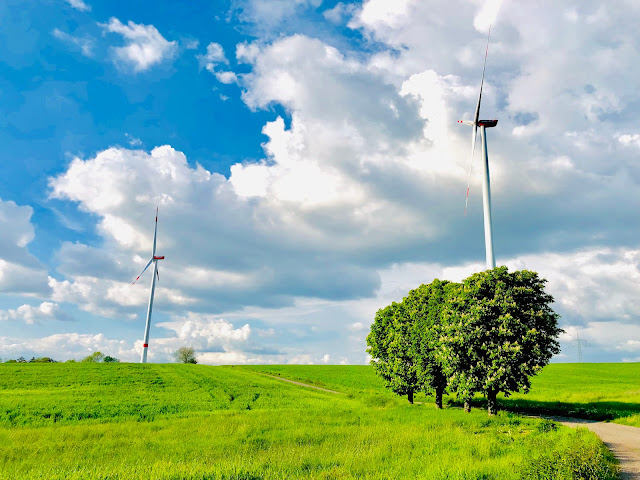
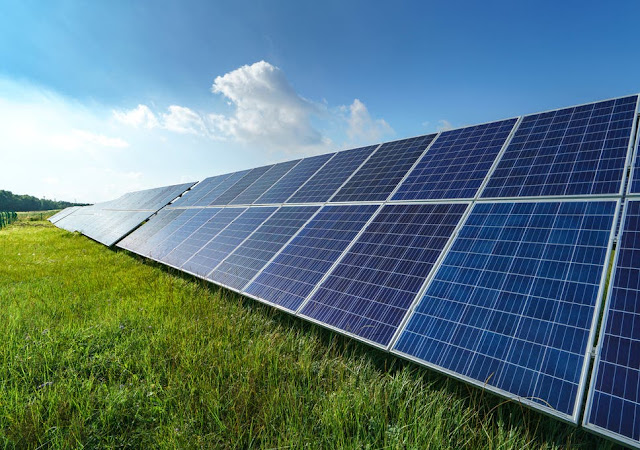

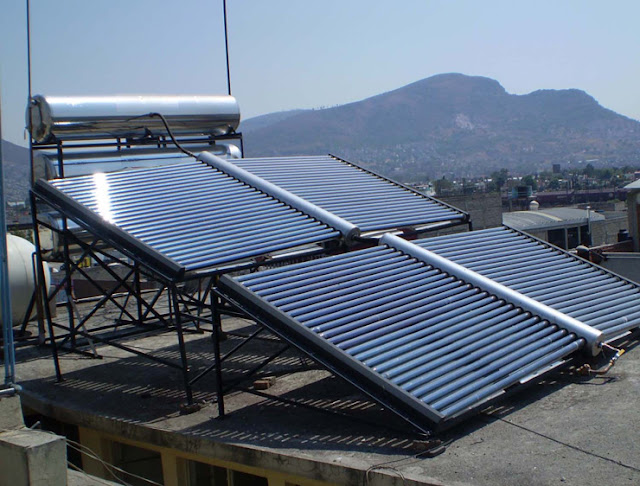

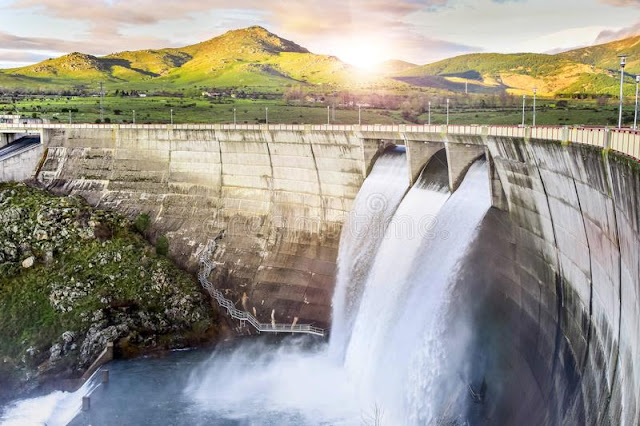








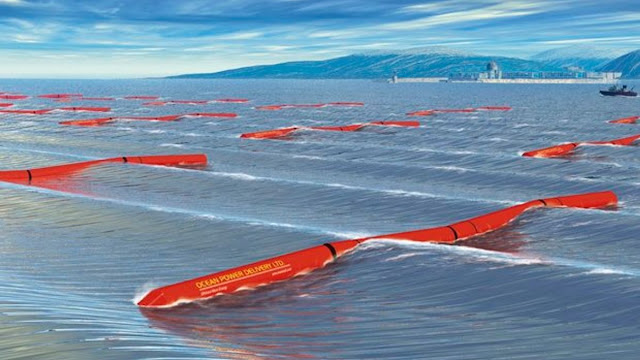










Comments
Post a Comment
If you have any doubts and queries please let me know